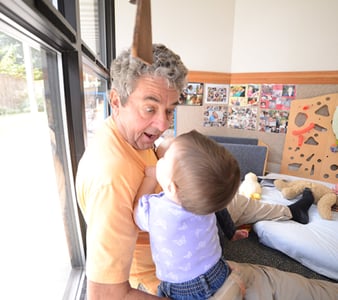
Exploring the Readiness Continuum
We all have bad habits. We all want to change something about ourselves—a nicotine addiction, a lack of physical exercise, a relentless sweet tooth (like mine!), an ineffective way or relating to our children or significant others in times of stress, and on and on.
Because we’ve all dealt with something that’s held us back from actualizing our best selves at some point in our lives, we know that change isn’t like turning on or off a light switch. You don’t go to bed a pack-a-day smoker and wake up a non-smoker because you saw one anti-smoking ad. You don’t go years without exercising to being a “gym rat” because your spouse successfully nagged you into a membership. You don’t fundamentally change the way you interact with the children you teach based on a score from a classroom observation. And, like I proved recently, you just can’t go from a raging sugar addiction to completely cutting it out of your diet on a whim—especially not the week before Halloween. (Seriously, what was I thinking?)
Change, like most things in life, is a process. It's not a straight line of progress, however. At any given moment we can find ourselves at a different stage in our readiness to change.
Any coach who has seen positive outcomes in their teachers intuitively knows this to be true. Researchers have developed a model to describe how readiness relates to the ability to change as a readiness continuum. Here’s what that looks like:

Applying the Readiness Continuum to Everyday Life
Because I’m a sucker for analogy, let’s apply this readiness continuum to my sweet tooth:
Not ready to change:
They say ignorance is bliss, and when it comes to a sugar addiction this could not be more true. Until about six months ago, I happily, blissfully consumed sugar seemingly without consequence. It’s not that I wasn’t aware I was eating “too much” sugar (when people start calling you Snacks and buying you candy in lieu of gifts on major holidays, it becomes hard to ignore). It’s just that I wasn’t aware of this behavior as a problem. So I eat too much sugar; so what?
On the fence:
And then the inevitable happened: I developed a terrible toothache. I went to the dentist and discovered I needed an emergency root canal. I’ll spare you the details of that experience, but it was—to say the very, very least—not fun. During the process, my dentist called me out on my sugar intake and cautioned more cavities, more root canals, more excruciating dental work down the road if I didn’t get a handle on it. Stat.
I’d love to tell you that I walked out of the dentist office with a numb face and a firm resolve to give up sugar right then and there lest I ever have to go through that again. But that’s not how change works. I only walked out of there with an awareness that my sugar addiction did have consequences—and not-so-pleasant ones.
And here’s where I’ve found myself ever since. I waver. Often. Sometimes I want to change (remember when I mentioned my lame, misguided attempt at quitting sugar the week before Halloween? This was a brief burst of “Ok, I’ll change!”, that quickly subsided the following week when candy was suddenly everywhere). But I wouldn’t say I’ve ever been fully ready to change. Not yet, anyway.
Ready to change:
This is the, pardon the pun, sweet spot I aspire to be in. This is where I’ll move out of wavering and develop a plan for improvement. Maybe I’ll set a quit date. Maybe I’ll gradually reduce my intake until I suddenly find myself sugar free (and loving it!). Maybe I’ll go to a nutritionist who will help me craft a plan that I’ll actually stick to because it’s realistic and because I’m ready. I don’t know what this looks like because I’m not there yet, but I do know I will only reach this stage in the continuum as a result of because I’ve moved through different phases in the readiness continuum.
Applying the Readiness Continuum to Your Teacher
So how does my personal struggle to kick the sugar habit (or any of your personal struggles to create change in your life) relate to teacher readiness for change? A lot, actually. Let's look at each touch point in the continuum and evaluate how each phase relates:
- Not ready to change: At this point in the continuum, your teachers may not be aware of the problem or don't take responsibility for the problem. They might, for example, cling to old routines, or be resistant to the idea of change—much like I was before I was confronted with an alternative way of looking at sugar addiction (i.e., too much sugar = root canal).
- On the fence: Here, your teacher understands the need for change but isn't clear that she needs to change—or can change, for that matter.
- Ready to change: Ah, the sweet spot. At this point in the continuum, your teachers are fully aware of the problem and are ready to take action. It's from this place that real, lasting change can occur.
Here are a few things to note about the readiness continuum:
- We can be at any point on the continuum at any time.
- We can even be at a multiple points, depending on the issue.
- As we work with others to motivate a change in behavior, our expectations for change need to align with where a person falls in the continuum.
Once you know where your teachers fall on the continuum, you can create outcomes by applying the Know, See, Do framework. What’s Know, See, Do, you ask? We’ll take a closer look at this next week. Stay tuned!

